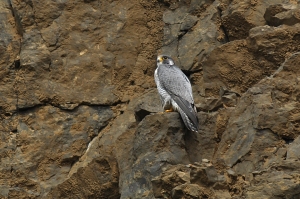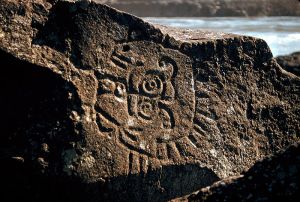About
The Setting
Near the end of the last ice age, a series of catastrophic “mega” floods roared along the course of the Columbia River. The result? A dramatic gorge with steep, near-vertical basalt cliffs and high “hanging” waterfalls towering hundreds of feet above the river.
The Columbia River Gorge is the only a sea-level passageway in the Cascade Range. It connects the Pacific Ocean’s marine climate with Oregon and Washington’s inland, continental climate. This combination creates strong winds — a dominant feature of the Gorge. During the summer, winds generally blow from the west; during the fall and winter, from the east.

The Columbia River Gorge stretches 80 miles along the border of Oregon and Washington — from Portland to the Deschutes River.
The Columbia River is second in volume and seventh in length of all rivers in the country. The rugged topography and fascinating geology of the Gorge together with the Columbia River’s bends and narrows and the Cascades’ plentiful waterfalls make this National Scenic Area a photographer’s playground.
Ecology, Plants, and Wildlife
The diversity of plants and wildlife contained within the Columbia River Gorge is mind-boggling. Between the mouth of the Sandy River near Portland and the Deschutes River 80 miles upstream, over 800 different species of wildflowers and shrubs to flourish — nearly a quarter of the state’s total. Included on Oregon State Parks lands are 19 sensitive plant species and at least 15 sensitive animal species.
The reason for the Columbia River Gorge’s incredible diversity is the number of ecological niches created by its extremes. Annual precipitation in the Gorge jumps from 75-100″ on the upper slopes of the west Cascades to down to 10-15″ near The Dalles. Elevation rockets from around sea level on the Columbia to just under 5000′ at the peak of Mt. Defiance.
Plant life transforms from the dark, damp forests of hemlock, Douglas-fir, cedar, and devil’s club in the west to bright, airy savannas of oak, ponderosa pine, bluebunch wheatgrass, and sagebrush in the east.
Special habitats make homes for special species: cliffs are used by Peregrine Falcons for nesting; talus slopes are used by pikas and rare salamanders; scablands are inhabited by special plant species; and north-facing waterfall spray zones are used by relic plants and rare insects, snails, and limpets.
Cultural History
The lands within the Columbia River Gorge are among the most culturally and historically significant in the Pacific Northwest.
The entire stretch of the Columbia River has been inhabited by tribes of Native people for more than 13,000 years. With the natural bounty of the region, native populations prospered and had developed an elaborate and complex culture by the time Europeans first arrived. A link between the northwest coast and the inner plateau, the Gorge was also a great trading center.
The history of this 80-mile stretch of river reflects many of the larger themes of American western history. The Gorge has been used as an important trade and transportation corridor for centuries by everyone from the Native Americans, to the first European explorers and traders, to Lewis and Clark’s expedition, and, later, to immigrating settlers on the Oregon Trail.
Eventually, major river locks, railroads, and roads were constructed through the Gorge. Communities sprung up along the commercial routes. The Columbia River Highway, completed in 1922, was the first paved, through-road in the Gorge and one of the country’s first built expressly to promote touring, scenery, and outdoor recreation.
Today, the Gorge is a bustling thoroughfare, connecting the urban fringes of Portland with the more rural and small-town communities of Hood River and Wasco Counties. Agriculture, forestry, transportation, and hydro- and wind-power are the major economies of the area with the recreation and tourism growing. Native Americans, representing four sovereign tribal nations in the Columbia Basin, continue to live and exercise their treaty rights in the Gorge and are actively involved in the fisheries and resource management of the Columbia River Basin.
(Adapted from the OPRD Columbia Gorge Management Unit Master Plan Summary, 1994.)


Great website. You guys are AWSOME! Marge Dryden, NSA archaeologist.